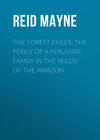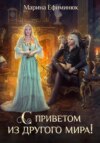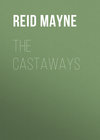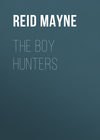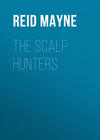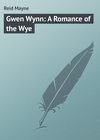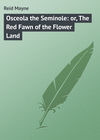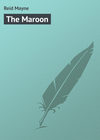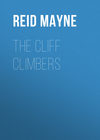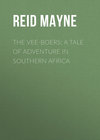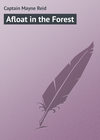Czytaj książkę: «The Forest Exiles: The Perils of a Peruvian Family in the Wilds of the Amazon»
Chapter One.
The biggest Wood in the World
Boy reader, I am told that you are not tired of my company. Is this true?
“Quite true, dear Captain, – quite true!” That is your reply. You speak sincerely? I believe you do.
In return, believe me, when I tell you I am not tired of yours; and the best proof I can give is, that I have come once more to seek you. I have come to solicit the pleasure of your company, – not to an evening party, nor to a ball, nor to the Grand Opera, nor to the Crystal Palace, nor yet to the Zoological Gardens of Regent’s Park, – no, but to the great zoological garden of Nature. I have come to ask you to accompany me on another “campaign,” – another “grand journey” through the fields of Science and Adventure. Will you go?
“Most willingly – with you, dear Captain, anywhere.”
Come with me, then.
Again we turn our faces westward; again we cross the blue and billowy Atlantic; again we seek the shores of the noble continent of America.
“What! to America again?”
Ha! that is a large continent, and you need not fear that I am going to take you over old ground. No, fear not that! New scenes await us; a new fauna, a new flora, – I might almost say, a new earth and a new sky!
You shall have variety, I promise you, – a perfect contrast to the scenes of our last journey.
Then, you remember, we turned our faces to the cold and icy North, – now our path lies through the hot and sunny South. Then we lived in a log-hut, and closed every cranny to keep out the cold, – now, in our cottage of palms and cane, we shall be but too glad to let the breeze play through the open walls. Then we wrapped our bodies in thick furs, – now we shall be content with the lightest garments. Then we were bitten by the frost, – now we shall be bitten by sand-flies, and mosquitoes, and bats, and snakes, and scorpions, and spiders, and stung by wasps, and centipedes, and great red ants! Trust me, you shall have a change!
Perhaps you do not contemplate such a change with any very lively feelings of pleasure. Come! do not be alarmed at the snakes, and scorpions, and centipedes! We shall find a cure for every bite – an antidote for every bane.
Our new journey shall have its pleasures and advantages. Remember how of old we shivered as we slept, coiled up in the corner of our dark log-hut and smothered in skins, – now we shall swing lightly in our netted hammocks under the gossamer leaves of the palm-tree, or the feathery frondage of the ferns. Then we gazed upon leaden skies, and at night looked upon the cold constellation of the Northern Bear; – now, we shall have over us an azure canopy, and shall nightly behold the sparkling glories of the Southern Cross, still shining as bright as when Paul and his little Virginie with loving eyes gazed upon it from their island home. In our last journey we toiled over bleak and barren wastes, across frozen lakes, and marshes, and rivers; – now we shall pass under the shadows of virgin forests, and float lightly upon the bosom of broad majestic streams, whose shores echo with the voices of living nature.
Hitherto our travels have been upon the wide, open prairie, the trackless plain of sand, the frozen lake, the thin scattering woods of the North, or the treeless snow-clad “Barrens.” Now we are about to enter a great forest, – a forest where the leaves never fade, where the flowers are always in bloom, – a forest where the woodman’s axe has not yet echoed, where the colonist has hardly hewed out a single clearing, – a vast primeval forest, – the largest in the world.
How large, do you ask? I can hardly tell you. Are you thinking of Epping, or the New Forest? True, these are large woods, and have been larger at one time. But if you draw your ideas of a great forest from either of these you must prepare yourself for a startling announcement – and that is, that the forest through which I am going to take you is as big as all Europe! There is one place where a straight line might be drawn across this forest that would measure the enormous length of two thousand six hundred miles! And there is a point in it from which a circle might be described, with a diameter of more than a thousand miles, and the whole area included within this vast circumference would be found covered with an unbroken forest!
I need scarce tell you what forest I allude to, for there is none other in the world of such dimensions – none to compare with that vast, trackless forest that covers the valley of the mighty Amazon!
And what shall we see in travelling through this tree-covered expanse? Many a strange form of life – both vegetable and animal. We shall see the giant “ceiba” tree, and the “zamang,” and the “caoba,” twined by huge parasites almost as thick as their own trunks, and looking as though they embraced but to crush them; the “juvia,” with its globe-shaped fruits as large as the human head; the “cow-tree,” with its abundant fountains of rich milk; the “seringa,” with its valuable gum – the caoutchouc of commerce; the “cinchona,” with its fever-killing bark; the curious “volador,” with its winged seeds; the wild indigo, and the arnatto. We shall see palms of many species – some with trunks smooth and cylindrical, others covered with thorns, sharp and thickly set – some with broad entire leaves, others with fronds pinnate and feathery, and still others whose leaves are of the shape of a fan – some rising like naked columns to the height of an hundred and fifty feet, while others scarcely attain to the standard of an ordinary man.
On the water we shall see beautiful lilies – the snow-white nymphs, and the yellow nuphars. We shall see the Victoria regia covering the pool with its massive wax-like flowers, and huge circular leaves of bronze green. We shall see tall flags like Saracen spears, and the dark green culms of gigantic rushes, and the golden arundinaria– the bamboo, and “cana brava,” – that rival the forest trees in height.
Many a form of animal life we may behold. Basking in the sun, we may behold the yellow and spotted body of the jaguar – a beautiful but dreaded sight. Breaking through the thick underwood, or emerging slowly from the water, we may catch a glimpse of the sombre tapir, or the red-brown capivara. We may see the ocelot skulking through the deep shade, or the margay springing upon its winged prey. We may see the shaggy ant-bear tearing at the cones of sand-clay, and licking up the white termites; or we may behold the scaly armadillo crawling over the sun-parched earth, and rolling itself up at the approach of danger. We may see human-like forms, – the quadrumana– clinging among the high branches, and leaping from tree to tree, like birds upon the wing; we may see them of many shapes, sizes, and colours, from the great howling monkeys, with their long prehensile tails, down to the little saïmiris and ouistitis not larger than squirrels.
What beautiful birds, too! – for this forest is their favourite home. Upon the ground, the large curassows, and guans, and the “gallo,” with his plumage of bright red. Upon the trees, the macaws, and parrots, and toucans, and trogons. In the waters, the scarlet flamingoes, the ibises, and the tall herons; and in the air, the hawks, the zamuros, the king-vultures, and the eagles.
We shall see much of the reptile world, both by land and water. Basking upon the bank, or floating along the stream, we may behold the great water lizards – the crocodile and caiman; or the unwieldy forms of the cheloniae– the turtles. Nimbly running along the tree-trunk, or up the slanting lliana, we may see the crested iguana, hideous to behold. On the branches that overhang the silent pool we may see the “water-boa,” of huge dimensions, watching for his prey – the peccary, the capivara, the paca, or the agouti; and in the dry forest we may meet with his congener the “stag-swallower,” twined around a tree, and waiting for the roebuck or the little red-deer of the woods.
We may see the mygale, or bird-catching spider, at the end of his strong net-trap, among the thick foliage; and the tarantula, at the bottom of his dark pitfall, constructed in the ground. We may see the tent-like hills of the white ants, raised high above the surface, and the nests of many other kinds, hanging from high branches, and looking as though they had been constructed out of raw silk and pasteboard. We may see trees covered with these nests, and some with the nests of wasps, and still others with those of troupials and orioles – birds of the genus icterus and cassicus– hanging down like long cylindrical purses.
All these, and many more strange sights, may be seen in the great forest of the Amazon valley; and some of them we shall see —voilà!
Chapter Two.
The Refugees
Upon a bright and lovely evening, many years ago, a party of travellers might have been seen climbing up that Cordillera of the Andes that lies to the eastward of the ancient city of Cuzco. It was a small and somewhat singular party of travellers; in fact, a travelling family, – father, mother, children, and one attendant. We shall say a word of each of them separately.
The chief of the party was a tall and handsome man, of nearly forty years of age. His countenance bespoke him of Spanish race, and so he was. He was not a Spaniard, however, but a Spanish-American, or “Creole,” for so Spaniards born in America are called to distinguish them from the natives of Old Spain.
Remember – Creoles are not people with negro or African blood in their veins. There is a misconception on this head in England, and elsewhere. The African races of America are either negroes, mulattoes, quadroons, quinteroons, or mestizoes; but the “Creoles” are of European blood, though born in America. Remember this. Don Pablo Romero – for that was the name of our traveller – was a Creole, a native of Cuzco, which, as you know, was the ancient capital of the Incas of Peru.
Don Pablo, as already stated, was nearly forty years of age. Perhaps he looked older. His life had not been spent in idleness. Much study, combined with a good deal of suffering and care, had made many of those lines that rob the face of its youthful appearance. Still, although his look was serious, and just then sad, his eye was occasionally seen to brighten, and his light elastic step showed that he was full of vigour and manhood. He had a moustache, very full and black, but his whiskers were clean shaven, and his hair cut short, after the fashion of most people in Spanish America. He wore velvet pantaloons, trimmed at the bottoms with black stamped leather, and upon his feet were strong boots of a reddish yellow colour – that is, the natural colour of the tanned hide before it has been stained. A dark jacket, closely buttoned, covered the upper part of his body, and a scarlet silk sash encircled his waist, the long fringed ends hanging down over the left hip. In this sash were stuck a Spanish knife and a pair of pistols, richly ornamented with silver mountings. But all these things were concealed from the view by a capacious poncho, which is a garment that in South America serves as a cloak by day and a blanket by night. It is nearly of the size and shape of an ordinary blanket, with a slit in the centre, through which the head is passed, leaving the ends to hang down. Instead of being of uniform colour, several bright colours are usually woven into the poncho, forming a variety of patterns. In Mexico a very similar garment – the scrape – is almost universally worn. The poncho of Don Pablo was a costly one, woven by hand, and out of the finest wool of the vicuña, for that is the native country of this useful and curious animal. Such a poncho would cost 20 pounds, and would not only keep out cold, but would turn rain like a “macintosh.” Don Pablo’s hat was also curious and costly. It was one of those known as “Panama,” or “Guayaquil,” – hats so called because they are manufactured by Indian tribes who dwell upon the Pacific coast, and are made out of a rare sea-grass, which is found near the above-mentioned places. A good Guayaquil hat will cost 20 pounds; and although, with its broad curling brim and low crown, it looks not much better than Leghorn or even fine straw, yet it is far superior to either, both as a protection against rain, or, what is of more importance in southern countries, against a hot tropical sun. The best of them will wear half a lifetime. Don Pablo’s “sombrero” was one of the very best and costliest; and this, combined with the style of his other habiliments, betokened that the wearer was one of the “ricos,” or higher class of his country.
The costume of his wife, who was a dark and very beautiful Spanish woman, would have strengthened this idea. She wore a dress of black silk with velvet bodice and sleeves, tastefully embroidered. A mantilla of dark cloth covered her shoulders, and on her head was a low broad-brimmed hat, similar to those usually worn by men, for a bonnet is a thing unknown to the ladies of Spanish America. A single glance at the Doña Isidora would have satisfied any one that she was a lady of rank and refinement.
There were two children, upon which, from time to time, she gazed tenderly. They were her only ones. They were a boy and girl, nearly of equal size and age. The boy was the elder, perhaps thirteen or more, a handsome lad, with swarth face, coal-black eyes, and curly full-flowing dark hair. The girl, too, who would be about twelve, was dark – that is to say, brunette in complexion. Her eyes were large, round, and dreamy, with long lashes that kept the sun from shining into them, and thus deepened their expression.
Perhaps there are no children in the world so beautiful as those of the Spanish race. There is a smoothness of skin, a richness in colour, and a noble “hidalgo” expression in their round black eyes that is rare in other countries. Spanish women retain this expression to a good age. The men lose it earlier, because, as I believe, they are oftener of corrupted morals and habits; and these, long exercised, certainly stamp their lines upon the face. Those which are mean, and low, and vicious, produce a similar character of countenance, while those which are high, and holy, and virtuous, give it an aspect of beauty and nobility.
Of all beautiful Spanish children none could have been more beautiful than our two little Creole Spaniards, Leon and Leona – for such were the names of the brother and sister.
There yet remains one to be described, ere we complete the account of our travelling party. This one was a grown and tall man, quite as tall as Don Pablo himself, but thinner and more angular in his outlines. His coppery colour, his long straight black hair, his dark and wild piercing eye, with his somewhat odd attire, told you at once he was of a different race from any of the others. He was an Indian – a South American Indian; and although a descendant from the noble race of the Peruvian Incas, he was acting in the capacity of a servant or attendant to Don Pablo and his family. There was a familiarity, however, between the old Indian – for he was an old man – and Don Pablo, that bespoke the existence of some tie of a stronger nature than that which exists between master and servant. And such there was in reality. This Indian had been one of the patriots who had rallied around Tupac Amaru in his revolution against the Spaniards. He had been proscribed, captured, and sentenced to death. He would have been executed, but for the interference of Don Pablo, who had saved his life. Since then Guapo – such was the Indian’s name – had remained not only the retainer, but the firm and faithful friend, of his benefactor.
Guapo’s feet were sandalled. His legs were naked up to the knees, showing many an old scar received from the cactus plants and the thorny bushes of acacia, so common in the mountain-valleys of Peru. A tunic-like skirt of woollen cloth, – that home-made sort called “bayeta,” – was fastened around his waist, and reached down to the knees; but the upper part of his body was quite bare, and you could see the naked breast and arms, corded with strong muscles, and covered with a skin of a dark copper colour. The upper part of his body was naked only when the sun was hot. At other times Guapo wore a species of poncho like his master, but that of the Indian was of common stuff – woven out of the coarse wool of the llama. His head was bare.
Guapo’s features were thin, sharp, and intelligent. His eye was keen and piercing; and the gait of the old man, as he strode along the rocky path, told that it would be many years before he would show any signs of feebleness or tottering.
There were four animals that carried our travellers and their effects. One was a horse ridden by the boy Leon. The second was a saddle mule, on which rode Doña Isidora and Leona. The other two animals were not mounted. They were beasts of burden, with “yerguas,” or pack-saddles, upon which were carried the few articles that belonged to the travellers. They, were the camels of Peru – the far-famed llamas. Don Pablo, with his faithful retainer, travelled afoot.
You will wonder that one apparently so rich, and on so distant a journey, was not provided with animals enough to carry his whole party. Another horse at least, or a mule, might have been expected in the cavalcade. It would not have been strange had Guapo only walked – as he was the arriero, or driver, of the llamas – but to see Don Pablo afoot and evidently tired, with neither horse nor mule to ride upon, was something that required explanation. There was another fact that required explanation. The countenance of Don Pablo wore an anxious expression, as if some danger impended; so did that of the lady, and the children were silent, with their little hearts full of fear. They knew not what danger, but they knew that their father and mother were in trouble. The Indian, too, had a serious look; and at each angle of the mountain road he and Don Pablo would turn around, and with anxious eyes gaze back in the direction that led towards Cuzco. As yet they could distinguish the spires of the distant city, and the Catholic crosses, as they glistened under the evening sunbeam. Why did they look back with fear and distrust? Why? Because Don Pablo was in flight, and feared pursuers! What? Had he committed some great crime? No. On the contrary, he was the victim of a noble virtue– the virtue of patriotism! For that had he been condemned, and was now in flight – flying to save not only his liberty but his life! yes, his life; for had the sentinels on those distant towers but recognised him, he would soon have been followed and dragged back to an ignominious death.
Young reader, I am writing of things that occurred near the beginning of the present century, and before the Spanish-American colonies became free from the rule of Old Spain. You will remember that these countries were then governed by viceroys, who represented the King of Spain, but who in reality were quite as absolute as that monarch himself. The great viceroys of Mexico and Peru held court in grand state, and lived in the midst of barbaric pomp and luxury. The power of life and death was in their hands, and in many instances they used it in the most unjust and arbitrary manner. They were themselves, of course, natives of Old Spain – often the pampered favourites of that corrupt court. All the officials by which they were surrounded and served were, like themselves, natives of Spain, or “Gachupinos,” (as the Creoles used to call them,) while the Creoles – no matter how rich, or learned, or accomplished in any way – were excluded from every office of honour and profit. They were treated by the Gachupinos with contempt and insult. Hence for long long years before the great revolutions of Spanish America, a strong feeling of dislike existed between Creole Spaniards and Spaniards of Old Spain; and this feeling was quite independent of that which either had towards the Indians – the aborigines of America. This feeling brought about the revolution, which broke out in all the countries of Spanish America (including Mexico) about the year 1810, and which, after fifteen years of cruel and sanguinary fighting, led to the independence of these countries.
Some people will tell you that they gained nothing by this independence, as since that time so much war and anarchy have marked their history. There is scarcely any subject upon which mankind thinks more superficially, and judges more wrongly, than upon this very one. It is a mistake to suppose that a people enjoys either peace or prosperity, simply because it is quiet. There is quiet in Russia, but to its millions of serfs war continuous and eternal; and the same may be said of many other countries as well as Russia. To the poor slave, or even to the over-taxed subject, peace is no peace, but a constant and systematised struggle, often more pernicious in its effects than even the anarchy of open war. A war of this kind numbers its slain by millions, for the victims of famine are victims of political crime on the part of a nation’s rulers. I have no time now to talk of these things. Perhaps, boy reader, you and I may meet on this ground again, and at no very distant period.
Well, it was not in the general rising of 1810 that Don Pablo had been compromised, but previous to that. The influence of the European Revolution of 1798 was felt even in distant Spanish America, and several ebullitions occurred in different parts of that country at the same time. They were premature; they were crushed. Those who had taken part in them were hunted to the death. Death! death! was the war-cry of the Spanish hirelings, and bitterly did they execute their vengeance on all who were compromised. Don Pablo would have been a victim among others, had he not had timely warning and escaped; but as it was, all his property was taken by confiscation, and became the plunder of the rapacious tyrant.
We are introduced to him just at the period of his escape. By the aid of the faithful Guapo he had hastily collected a few things, and with his wife and family fled in the night. Hence the incompleteness of his travelling equipage. He had taken one of the most unfrequented paths – a mere bridle-road – that led from Cuzco eastward over the Cordillera. His intent was to gain the eastern slope of the Andes mountains, where he might conceal himself for a time in the uninhabited woods of the Great Montaña, and towards this point was he journeying. By a ruse he had succeeded in putting the soldiers of the despot on a false track; but it was not certain that they might not yet fall into the true one. No wonder then, when he gazed back towards Cuzco, that his look was one of apprehension and anxiety.
